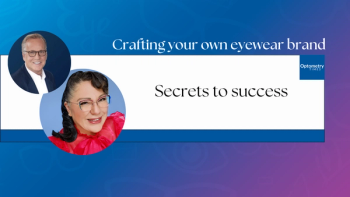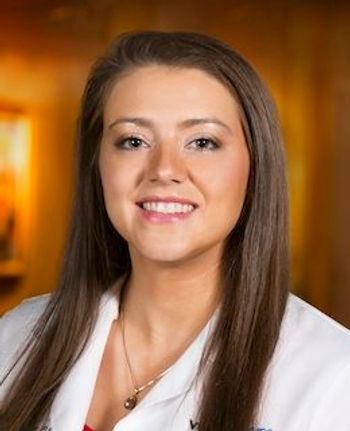
In the pipeline: What’s new and what’s coming in optometry technology
Keeping patients informed on the latest procedures and equipment available to treat their disorders is half the battle, says Paul Karpecki, OD, FAAO, at American Optometric Association’s Optometry’s Meeting.
Washington, DC-Keeping patients informed on the latest procedures and equipment available to treat their disorders is half the battle, says Paul Karpecki, OD, FAAO, at American Optometric Association’s Optometry’s Meeting.
“If you can answer all of your patients’ questions, then there is no reason to go anywhere else,” says Karpecki. “Some 70 percent of all patients get on the Internet before seeing their OD.”
Optometry has the technology to change lives, and Karpecki says it’s time to start using it.
Here are some of the newest innovation coming down the optometry pipeline.
Stem cell technologies
Limbal stem cell deficiency is seen in:
• Persistent epithelial defects
• Corneal scarring and ulceration
• Conjuctivalization of the cornea
• Severe vision loss
• Chronic pain
• Keratoplasty failure
ReNeuron cryopreserved formulation is the latest in retinal stem cell therapy. It was approved by the FDA as a treatment for retinal cell therapy in June 2017.
Another option is stem cell-coated contact lenses. These lenses are loaded with stem cells and could help naturally repair or retain sight, says Dr. Karpecki.
Related:
Glucose-monitoring contact lens
Google and Alcon have collaborated on a novel glucose-monitoring contact lens. This lens has sensors that are embedded between two soft layers of material, and a pinhole in the lens allows tear fluid to seep into the sensor and be used to measure blood sugar levels.
Yolia Health’s TVT treatment
Yolia Health is seeking FDA approval for its drop that can restructure the cornea. It can be used in corneal reshaping and affects cornea collagen structure. TVT treatment is currently approved in Mexico and is in process for U.S. FDA approval.
TearLab Osmolarity Reader
This next-generation platform can perform rapid testing in under two minutes. The TearLab Osmolarity Reader tests osmlarity, inflammation biomarkers, allergy, biomarkers, and specific drug-related biomarkers.
Dry eye testing
“The future is non-invasive dry eye testing,” says Dr. Karpecki. “Tear break-up time will become non-invasive.”
Allergan’s TruTear technology, which was recently approved by the FDA, stimulates tears to help treat aqueous deficient dry eye. TruTear is inserted through the nasal canal and uses wireless stimuli to create tears.
True Tear uses electrical impulses to stimulate the trigeminal nerve and produce natural tears. Trigeminal nerve stimulus creates meibum, mucin, and tears.
When treating dry eye, Dr. Karpecki warns that you can’t just do one thing and see success.
“You can’t do one thing for the most common form of dry eye, evaporative dry eye,” he says. “You have to treat all four: Obstruction, inflammation, tear film, and biofilm.”
The other problem ODs see with dry eye patients is symptoms due to digital device usage and blink rate.
“The average person blinks 15 to 20 times per minute in conversation,” says Karpecki. “The average times they blink while using a digital device is four.”
Another option is Dr. i-Coach, The Dr. i-Coach is a sensor and software package that can help users develop and maintain proper computer habits by incorporating the recommended treatment philosophies and recommendations from key eye care professionals and organizations
Migranes and eyegraines
Some patients have trouble battling migraines, or as some call them “eyegraines.” NueroLens is a therapeutic lens developed to help realign the eyes and reduce headaches in patients. In the test study, 74 percent of patients reduced their headaches and dry eye, according to Dr. Karpecki.
NeuroLens is a progressive prism lens and will hit the market in late 2017.
Related:
Tonometer
Icare ic100 measures intraocular pressure using a patented rebound measuring principle that requires no air, drops, or specialized skills for its use. Icare's proprietary algorithm coupled with its software allows it to evaluate deceleration, contact time, and other motion parameters of the probe when it touches the cornea.
3D printing
Though still in its infancy, 3D printing offers hope for optical reconstructive surgery, according to Dr. Karpecki. Researchers have produced a 3D eye socket for reconstructive surgery. 3D printing also allows doctors to use implants with finishes that will encourage the bones to meld with the implant. 3D implants tend to fit better than traditional metal implants and may shorten surgery and recovery times
Ophthalmic lenses
Katena has developed a line of reusable and single-use ophthalmic lenses. These lenses were designed to help lower costs and minimize risk of disease transmission. The lenses arrive sterile, so there is no need to clean and disinfect the lens prior to use.
VisAbility Micro-Insert System
The VisAbility Micro-Insert System (Refocus Group) is a presbyopic procedure performed outside the eye’s line-of-sight. It was developed to restore near vision without any compromise to distance vision or depth perception. Because the procedure is performed in the sclera, the VisAbility Micro-Insert System doesn't alter the cornea or natural lens, so the eye is preserved for future refractive or cataract procedures.
Topical treatments for presbyopia
EV06 is a topical treatment for presbyopia developed by Encore Vision and acquired by Alcon in December 2016. EV06 targets presbyopia by restoring crystalline lens flexibility, thereby allowing the lens to focus on nearby objects.
IOLs
The Light Adjustable Lens from RxSight (formerly Calhoun Vision)can trial monovision through a UV protective lens. This 6 mm silicone optic and PMMA haptic IOL is available in Europe. It can correct up to 0.1D accuracy. A UV laser changes the refractive error.
Related:
Wearable technology
The wearable technology industry is worth $1.6 billion. The biggest advances are wearable devices that cut the cord, says Dr. Karpecki. With two billion eyeglass wearers, four billion mobile phone users, and one trillion photos taken each year, it should come as no surprise how wearable technology has taken off.
PogoTec launched the world’s smallest camera that attaches directly to eyeglass frames. This camera can take up to 100 photos or up to six 30-second HD videos on a single charge. The included smart case can store up to 8000 photos or 90 30-second HD videos.
Gene therapy
CRISPR Gene Editing can remove the damaged or faulty genes for patients. This procedure allows doctors to clip a specific DNA sequence and replace it with a new one, offering the potential to cure diseases caused by defective genes.
Advances in drug delivery
The Replenish Ophthalmic MicroPump system features four sub-systems: Anterior MicroPump (for glaucoma patients), Posterior MicroPump (for retina patients), EyeLink (wireless programmer/charger for bidirectional communication with the MicroPump implants), and Drug Refill System (separate console unit to fill and refill the MicroPump implants).
Punctal plug delivery
The Dextenza punctal plug by Ocular Therapeutix is placed into the canaliculus and is designed to deliver dexamethasone to the ocular surface for up to 30 days. Following treatment, Dextenza resorbs and exits the nasolacrimal system without the need for removal.
Imprimis Dropless Therapy
Impris Dropless Therapy uses a compounded antibiotic and steroid formulation in single, injectable doses administered by physicians following ocular surgery. The treatment is designed to eliminate the need for patient-administered eye drops, potentially eliminating patient non-compliance or dosing errors. Imprimis Dropless Therapy offers additional potential in the marketplace.
Bausch + Lomb Vyzulta
This nitrious oxide sparing prostaglandin analogue is likely to be approved by the FDA in late summer 2017. It is the first drop to show improvement over timolol in lowering IOP in its FDA trial. Vyzulta lowered IOP by 9.1 mm compared to 7.3 mm for timolol in Phase III trials.
Rhopressa and Roclatan
Aerie Pharmaceuticals Rhopressa (netarsudil ophthalmic solution) and Roclatan (a combination drug containing both Rhopressa and generic latanoprost) promise new methods of action in the treatment of glaucoma.
Related:
Anti-viral
Shire’s anti-viral involves povidone iodine and dexamethasone. Povidine iodine currently is used as an antiseptic peri-operatively as well as for epidemic keratoconjunctivitis. Often times significant inflammation is associated with povidine, so dexamethasone is included.
Zerviate
FDA-approved Zerviate is the first approved new drug application for Nicox. It is the first topical ocular formulation of the antihistamine cetirizine. Nicox will partner with another company for U.S. commercialization rights.
Luminesse
Luminesse by Bausch + Lomb is a topical vasoconstrictor formulation to be used over-the-counter to relieve ocular redness due to minor eye irritations. It is a low-dose alpha adrenergic that whitens eyes 300 percent better than Visine. The effects last four to eight hours.
Lampalizumab
Developed by Roche, lampalizumab is the first potential treatment for geographic atrophy. Currently, no approved treatment exists for this advanced form of age-related macular degeneration (AMD). Two identical phase III studies are evaluating potential benefit of lampalizumab on geographic atrophy lesions.
Novartis RTH258
Novartis’ RTH258 is an injection for wet AMD. It is a single-chain antibody fragment VEGF inhibitor. RTH258 has shown long-lasting efficacy dosed every eight weeks compared with aflibercept.
Newsletter
Want more insights like this? Subscribe to Optometry Times and get clinical pearls and practice tips delivered straight to your inbox.


















































.png)


